
The Majestic Bahrain Fort: A Journey Through Time
Discover Bahrain Fort: A UNESCO World Heritage Site rich in history, culture, and breathtaking views, offering an immersive journey through ancient civilizations.
Bahrain Fort, also known as Qal'at al-Bahrain, is a stunning archaeological site that takes visitors on a journey back in time. Located on the northern coast of Bahrain, this UNESCO World Heritage Site is a testament to the island's rich history, dating back to 2300 BC. The fort has seen the rise and fall of various civilizations, including the Dilmun, Kassites, Greeks, and Persians, making it a melting pot of cultures and historical significance. As you walk through the ruins, you'll be mesmerized by the ancient architecture and the well-preserved artifacts that tell tales of a bygone era. The fort offers panoramic views of the surrounding landscapes, giving visitors a sense of the strategic importance of this location in ancient times. The on-site museum provides further insights into the fort's history, showcasing a wide range of artifacts, from pottery to weapons, that have been unearthed during excavations. A visit to Bahrain Fort is not just a trip to a historical site; it's an immersive experience that allows you to connect with the past. The tranquility of the area, combined with the sheer grandeur of the fort, makes it a must-visit destination for history enthusiasts and casual tourists alike. Whether you're exploring the ruins, enjoying the views, or delving into the exhibits at the museum, Bahrain Fort offers a unique and enriching experience.
Local tips in Bahrain Fort
- Visit early in the morning or late in the afternoon to avoid the midday heat and enjoy the site in a cooler, more comfortable setting.
- Wear comfortable shoes as there is a lot of walking and uneven terrain within the fort.
- Don't miss the on-site museum, which provides valuable context and showcases artifacts found at the site.
- Bring a hat, sunscreen, and water as there is limited shade within the fort grounds.
- Consider hiring a local guide to gain deeper insights into the history and significance of the fort.
The Majestic Bahrain Fort: A Journey Through Time
Bahrain Fort, also known as Qal'at al-Bahrain, is a stunning archaeological site that takes visitors on a journey back in time. Located on the northern coast of Bahrain, this UNESCO World Heritage Site is a testament to the island's rich history, dating back to 2300 BC. The fort has seen the rise and fall of various civilizations, including the Dilmun, Kassites, Greeks, and Persians, making it a melting pot of cultures and historical significance. As you walk through the ruins, you'll be mesmerized by the ancient architecture and the well-preserved artifacts that tell tales of a bygone era. The fort offers panoramic views of the surrounding landscapes, giving visitors a sense of the strategic importance of this location in ancient times. The on-site museum provides further insights into the fort's history, showcasing a wide range of artifacts, from pottery to weapons, that have been unearthed during excavations. A visit to Bahrain Fort is not just a trip to a historical site; it's an immersive experience that allows you to connect with the past. The tranquility of the area, combined with the sheer grandeur of the fort, makes it a must-visit destination for history enthusiasts and casual tourists alike. Whether you're exploring the ruins, enjoying the views, or delving into the exhibits at the museum, Bahrain Fort offers a unique and enriching experience.
When is the best time to go to Bahrain Fort?
Iconic landmarks you can’t miss
Bab Al Bahrain
Experience the historic charm of Bab Al Bahrain, a cultural landmark that welcomes you to the heart of Bahrain's vibrant heritage and bustling markets.
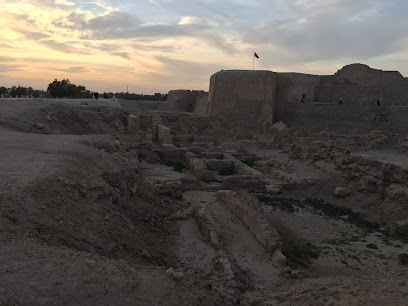
Al Areen Wildlife Park
Explore Al Areen Wildlife Park, a sanctuary of diverse wildlife and lush landscapes, perfect for families and nature lovers in Bahrain.
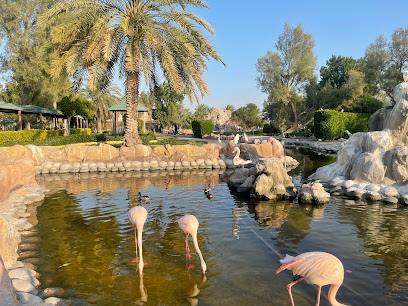
Al Fateh Grand Mosque
Explore the breathtaking beauty and cultural significance of Al Fateh Grand Mosque, a must-visit landmark in Bahrain showcasing stunning Islamic architecture.

Tree of Life
Discover the enchanting Tree of Life in Jebel Dukhan, Bahrain, a symbol of resilience and a must-visit natural wonder for all travelers.
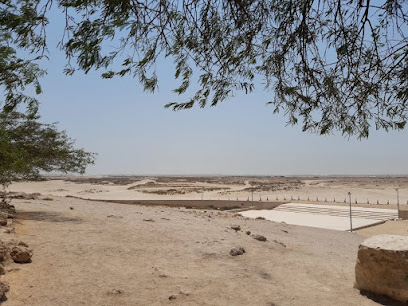
Prince Khalifah Bin Salman Park
Explore the tranquility of Prince Khalifah Bin Salman Park in Al Hidd, Bahrain – a scenic retreat perfect for relaxation, picnics, and outdoor fun.

Bahrain Bay
Discover the beauty of Bahrain Bay, a serene park and promenade offering picturesque views, lush landscapes, and vibrant cultural experiences in the heart of Manama.
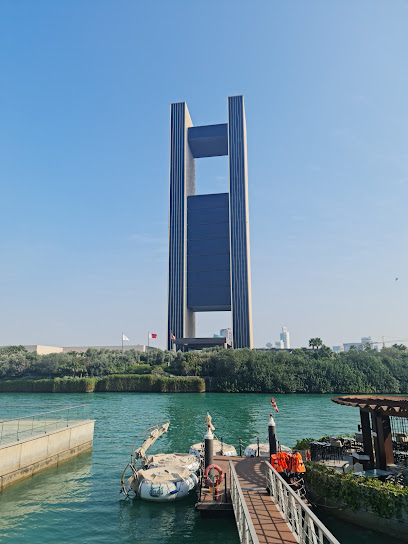
Bahrain National Museum
Discover the rich cultural heritage of Bahrain at the National Museum, a stunning blend of history, art, and architecture along the waterfront.

Sitra Park
Explore Sitra Park, a serene escape in Bahrain, perfect for family outings, leisurely strolls, and cultural events amidst lush greenery.
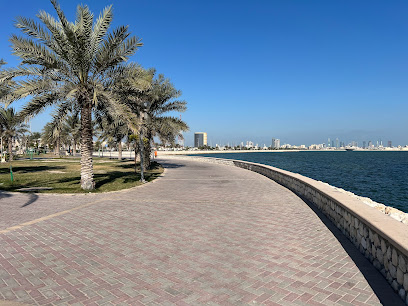
Arad Fort
Discover the timeless beauty and historical significance of Arad Fort, Bahrain's 15th-century architectural marvel and archaeological site.
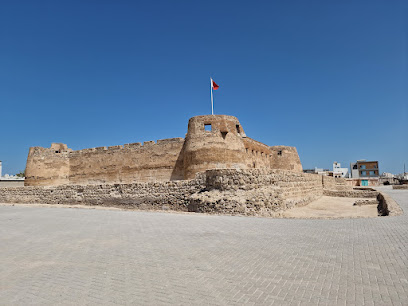
Sheikh Salman bin Ahmed Fort
Explore the historic Sheikh Salman bin Ahmed Fort, a monumental site in Riffa, Bahrain, showcasing the island's rich cultural heritage and stunning architecture.
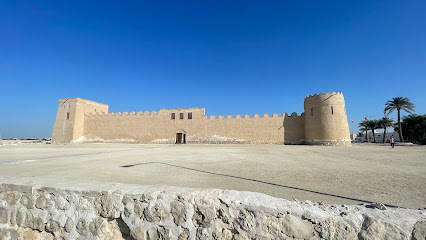
Bahrain Fort Museum
Explore Bahrain's rich cultural heritage at the Bahrain Fort Museum, home to ancient artifacts and breathtaking views.
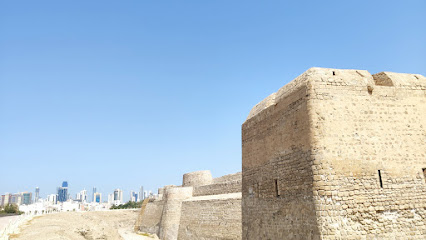
King Faisal Corniche
Experience the tranquil beauty of King Faisal Corniche, a stunning park in Manama perfect for relaxation, family outings, and cultural events.
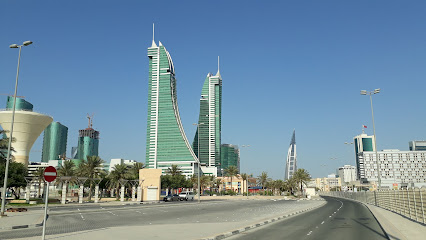
Juffair Beach
Discover the beauty of Juffair Beach in Manama, Bahrain, with its golden sands, delightful eateries, and vibrant atmosphere perfect for relaxation and adventure.
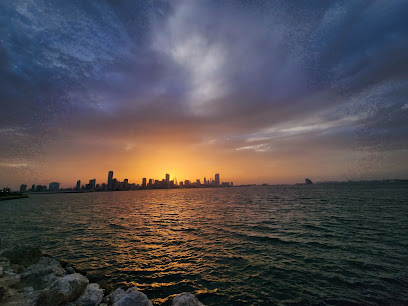
Heritage Village
Discover the essence of Bahraini tradition at Heritage Village, where culture, history, and craftsmanship come together in a vibrant setting.
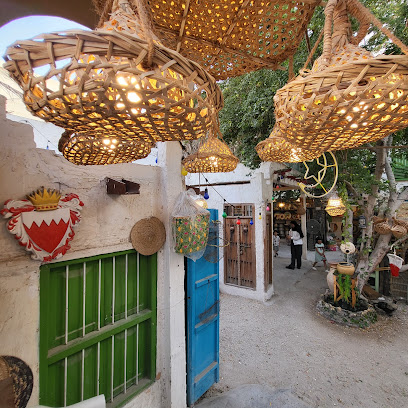
Military Museum
Uncover Bahrain's military legacy at the Military Museum in Riffa, where history comes alive through engaging exhibits and artifacts.

Unmissable attractions to see
Al Areen Wildlife Park
Discover the diverse wildlife and natural beauty of Al Areen Wildlife Park, a premier tourist attraction in Bahrain offering educational and interactive experiences.
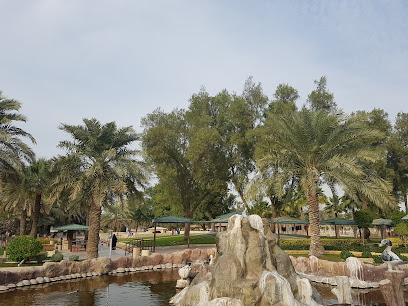
Dohat Arad Park
Discover the serene beauty of Dohat Arad Park in Muharraq, a perfect oasis for relaxation, family picnics, and nature walks.

Prince Khalifah Bin Salman Park
Experience the tranquility and beauty of Prince Khalifah Bin Salman Park, a perfect destination for families and nature lovers in Al Hidd, Bahrain.
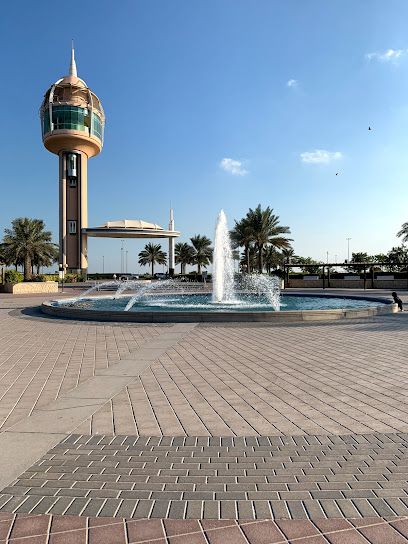
Sitra Park
Explore the beauty of Sitra Park in Bahrain, a serene destination for nature lovers and families seeking a peaceful retreat by the sea.
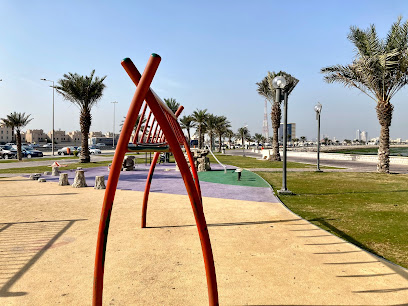
King Faisal Corniche
Discover the serene beauty of King Faisal Corniche in Manama, a perfect blend of nature and cityscape along the stunning waterfront.
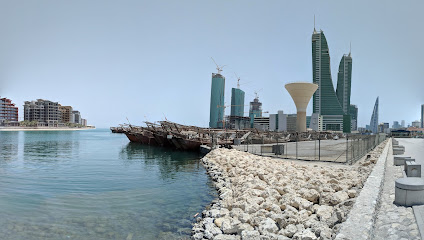
Khalifa AlKubra Garden
Discover the beauty of Khalifa AlKubra Garden, a serene park in Riffa, Bahrain, perfect for family outings, picnics, and tranquil walks amidst nature.

Bahrain National Charter Monument
Explore the Bahrain National Charter Monument, a stunning tribute to the nation's heritage and commitment to democracy in a serene environment.
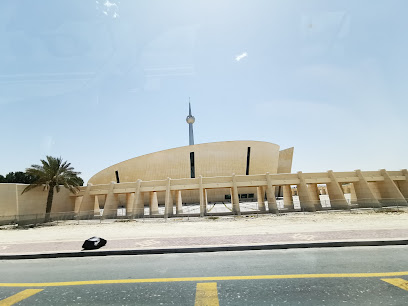
Seyadi House
Explore Seyadi House, a historical treasure in Muharraq, showcasing the rich cultural heritage and traditional architecture of Bahrain.
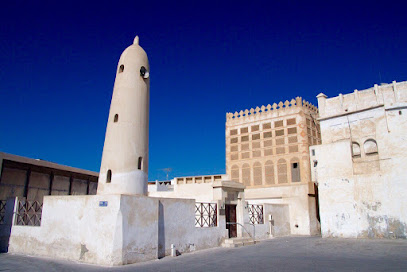
Bahrain Bay Park Bridge
Explore Bahrain Bay Park Bridge, a stunning waterfront park in Manama, perfect for leisure, family outings, and breathtaking views of the city.
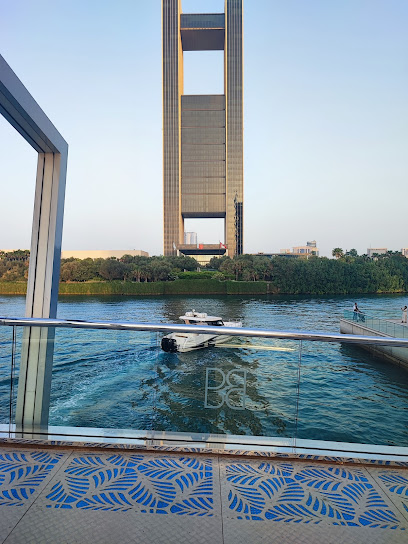
The Great Escape Challenge
Experience the thrill of The Great Escape Challenge in Abu Saiba, where adventure, teamwork, and creativity collide for an unforgettable escape room experience.

Sitra fishing jetty
Discover the serene beauty and cultural richness of Sitra Fishing Jetty, a unique gem along Bahrain's coastline, perfect for all travelers.

Bahrain Bay Beach
Experience the serene beauty of Bahrain Bay Beach, where golden sands meet the azure waters of the Arabian Gulf, perfect for relaxation and adventure.

Archaeologies of Green Pavilion
Explore the lush landscapes and cultural significance of the Archaeologies of Green Pavilion, a serene botanical garden in Muharraq, Bahrain.
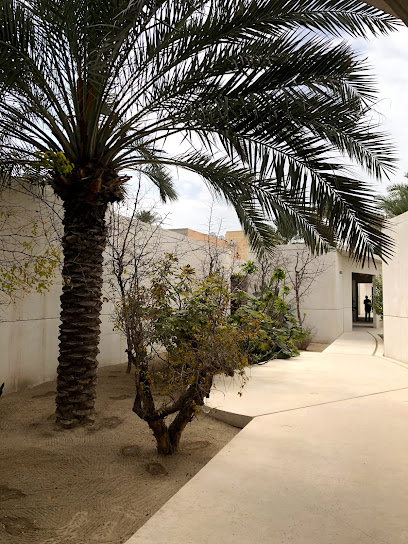
The Marina
Discover the vibrant atmosphere and stunning views at The Marina in Manama, your gateway to leisure, dining, and cultural experiences.
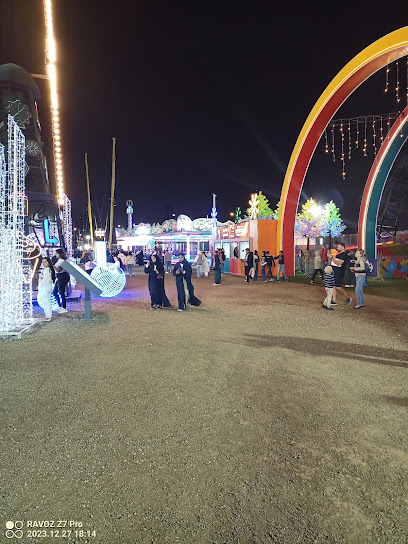
دوار الفخار
Explore the artistic heritage of Bahrain at Dwar Al-Fakhar, where traditional pottery meets vibrant culture and craftsmanship.
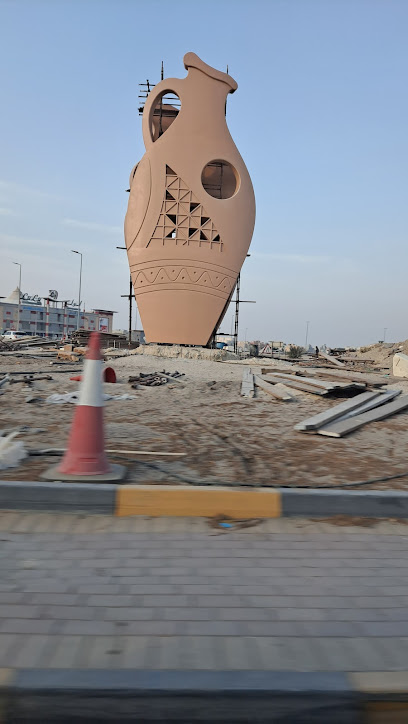
Essential places to dine
Fatto
Savor authentic Italian cuisine at Fatto in Seef - where each dish tells a story of culinary tradition.
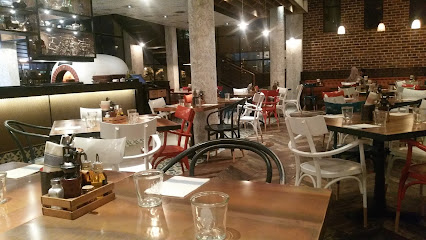
Monsoon
Discover the vibrant flavors of Asia at Monsoon in Manama, where culinary excellence meets elegant dining.

Fish Market Restaurant
Experience exquisite seafood dining at Fish Market Restaurant in Bahrain Bay - where every dish tells a story of freshness and flavor.

Oliveto
Discover authentic Italian cuisine at Oliveto in Manama's Adliya district – where elegance meets flavor.

CUT by Wolfgang Puck
Indulge in gourmet steaks and exquisite fine dining at CUT by Wolfgang Puck, where culinary artistry meets luxury in Bahrain.
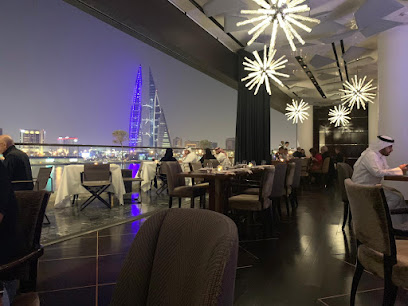
GB Cafe Bahrain Fort Site Museum
Savor delicious cuisine at GB Cafe while exploring the historic Bahrain Fort Site Museum - A culinary gem steeped in culture.
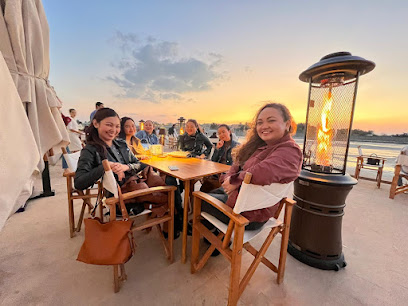
Fusions by Tala
Discover exquisite flavors at Fusions by Tala in Bahrain – where traditional cuisine meets modern elegance for an unforgettable dining experience.

Spices Restaurant
Experience authentic Indian cuisine at Spices Restaurant in Bahrain's Crowne Plaza - where tradition meets taste in every dish.
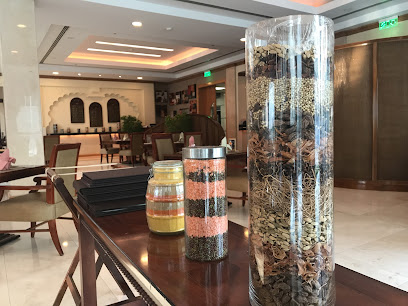
Bay View Lounge
Experience culinary bliss at Bay View Lounge in Bahrain Bay – where exquisite flavors meet stunning waterfront views.
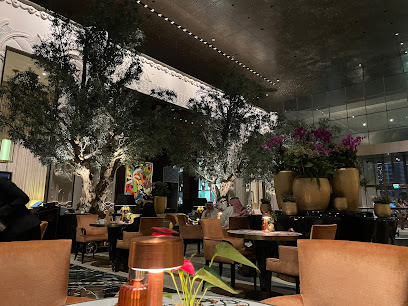
Bahrain Bay Kitchen
Discover Bahrain Bay Kitchen: A culinary gem offering delicious breakfast and brunch options with stunning bay views.
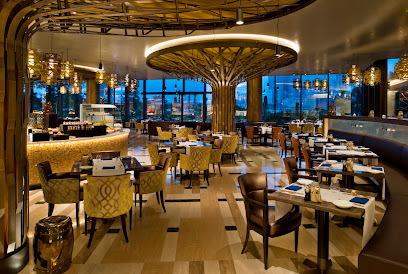
Due Mari ديو ماري
Experience authentic Italian flavors at Due Mari in Zallaq - where exquisite cuisine meets stunning ambiance.
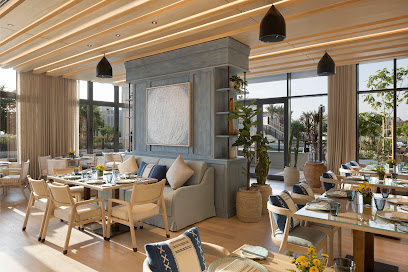
اليابور فود تراك
Savor authentic local and international flavors at اليابور فود تراك - A must-visit food truck experience in القلعة،.
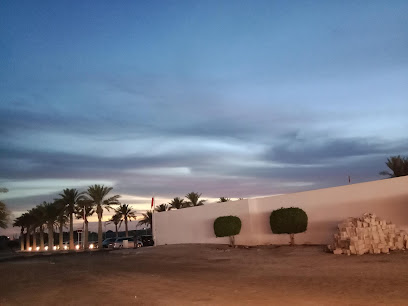
Khyber Fort Restaurant
Experience the authentic taste of Pakistan at Khyber Fort Restaurant in Riffa - where every meal is a celebration of flavor.
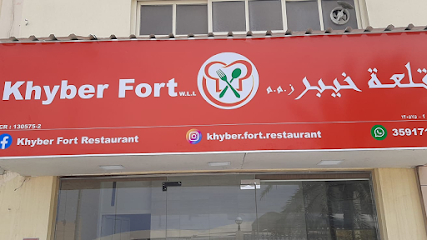
جاي كرك
Experience authentic Bahraini cuisine at جاي كرك near Bahrain Fort in Al Qalah - a culinary gem waiting for your visit.
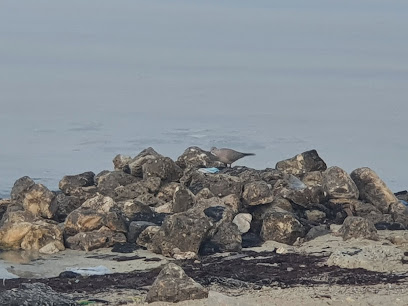
Restaurant ALTTAJIN & ALTUNUJAT
Savor authentic Bahraini flavors at Restaurant ALTTAJIN & ALTUNUJAT in Karbabad – where tradition meets modern culinary artistry.

Markets, malls and hidden boutiques
City Centre Bahrain
Discover a shopping paradise at City Centre Bahrain, where retail, dining, and entertainment come together in a vibrant and dynamic atmosphere.
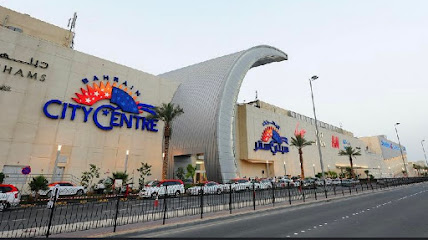
The Avenues
Explore The Avenues in Bahrain for a unique shopping experience blending luxury brands, diverse dining, and vibrant entertainment along the beautiful coastline.
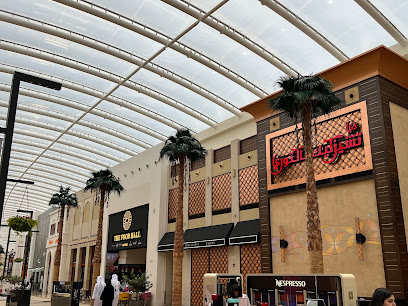
Seef Mall
Discover a shopping paradise at Seef Mall, where retail therapy meets entertainment and culinary delights in the heart of Manama.

Bahrain Mall
Explore Bahrain Mall, a dynamic shopping destination offering diverse retail, dining, and entertainment experiences in the heart of Manama.
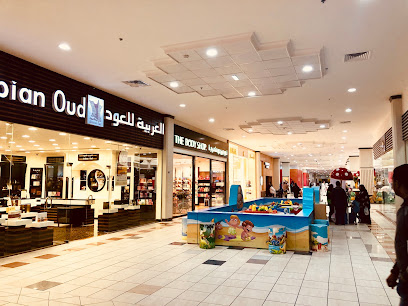
Gold City Mall
Discover the best of shopping and dining at Gold City Mall in Manama, where modern design meets vibrant culture in a premier retail destination.
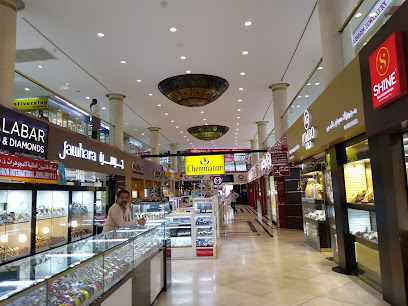
Saar Mall
Discover the vibrant shopping and dining experience at Saar Mall, Bahrain's premier retail destination that blends culture and modernity.
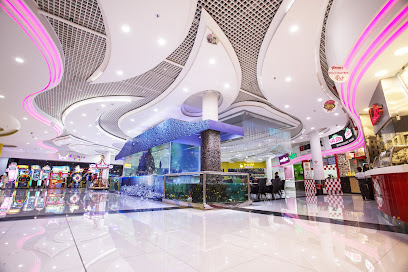
Al Hayat Shopping Centre
Explore Al Hayat Shopping Centre, a vibrant shopping and entertainment destination in Manama, offering a unique blend of local and international brands.

Gold city bahrain مدينة الذهب في البحرين
Experience the allure of Gold City Bahrain, a jewelry haven in Manama, showcasing exquisite gold and diamond creations to treasure forever.
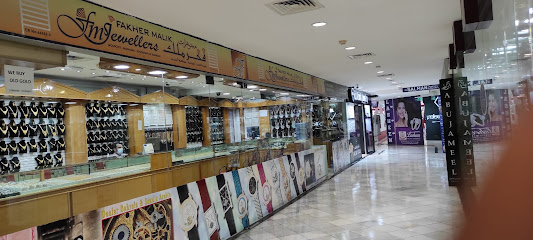
Lush Cosmetics Bahrain Seef Mall
Explore Lush Cosmetics Bahrain in Seef Mall - where eco-friendly meets luxury in handmade beauty products.

Vape in Bahrain Flagship Store
Explore the premier vaporizer store in Bahrain, offering a vast selection of products and an engaging atmosphere for vaping enthusiasts.
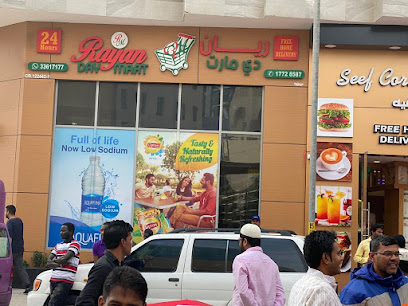
THE One Al A'ali
Explore THE One Al A'ali, where unique gifts and stylish home furnishings await in the heart of Manama, Bahrain.
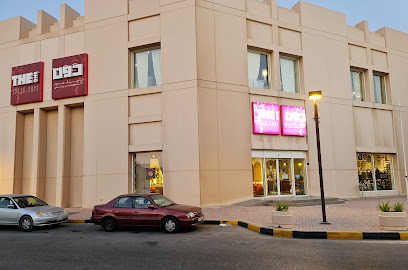
Bahrain_unique
Explore Bahrain's premier shopping destination, featuring a blend of local charm and international flair, perfect for all your shopping and dining needs.
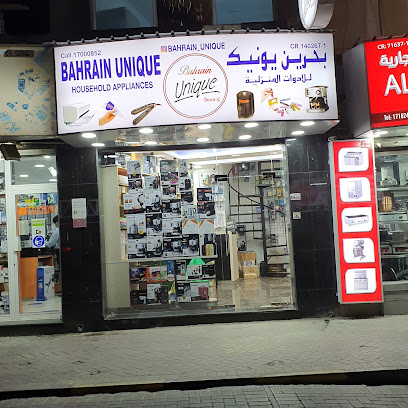
Details Concept Store & Online Shop
Explore the Details Concept Store & Online Shop for unique gifts, handcrafted treasures, and stylish home decor in the heart of Bahrain.
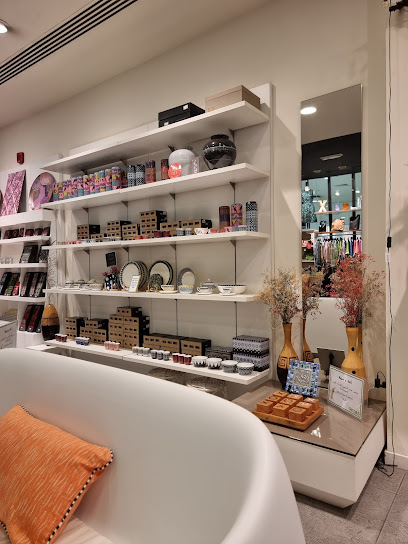
Lucky’s World
Discover a whimsical toy wonderland at Lucky's World in Seef, where imagination and creativity come to life!

Asia Carpet And Antique
Explore the vibrant artistry of Asia Carpet And Antique, where handcrafted carpets and antiques reflect Bahrain's rich cultural heritage.
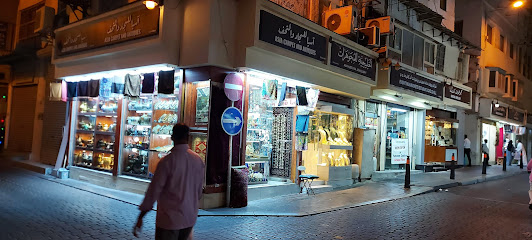
Essential bars & hidden hideouts
Thai Lounge
Discover the serene ambiance and authentic flavors of Thailand at Thai Lounge in Seef, Bahrain – an unforgettable dining experience.

The Burlington Club
Experience the elegance of The Burlington Club in Manama, where exquisite drinks meet a vibrant atmosphere for an unforgettable night out.

Gulf Russian Restaurant & Bar
Experience authentic Russian cuisine and vibrant nightlife at Gulf Russian Restaurant & Bar in Manama, where every meal is a cultural journey.
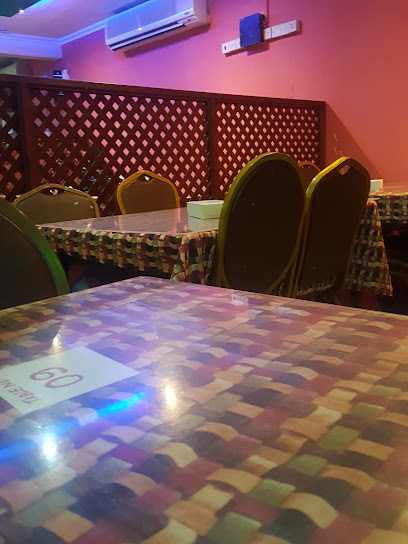
Elements Pool & Lounge
Discover a luxurious oasis at Elements Pool & Lounge in Manama, where exquisite drinks and a stunning poolside ambiance await.

Spectators Lounge
Discover Spectators Lounge in Manama - the ultimate destination for cocktails, sports, and a vibrant atmosphere.
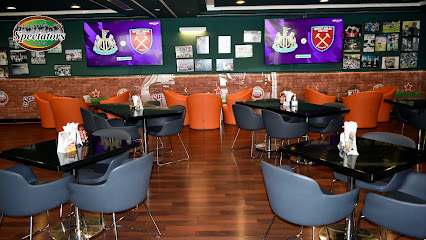
Fiddlers Green Irish Pub
Experience the essence of Irish culture at Fiddlers Green Irish Pub in Manama, where great food, drinks, and entertainment await.
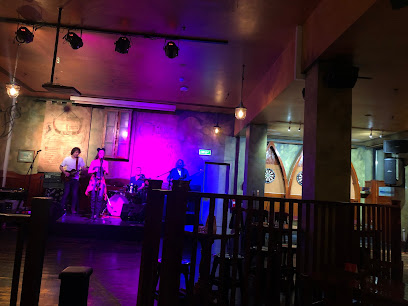
Social Monkey Seef
Discover Social Monkey Seef, a vibrant lounge in Manama's Seef District, offering exquisite drinks and lively atmosphere for the ultimate night out.

Downtown Bar
Experience the lively nightlife of Manama at Downtown Bar, where craft cocktails and a vibrant atmosphere await.

1664 BAR at Gulf Inn Seef
Discover the lively 1664 BAR at Gulf Inn Seef for a unique nightlife experience with exquisite drinks and an inviting atmosphere.

Red lions sports bar
Experience the energetic vibe of Red Lions Sports Bar in Seef, where sports, good food, and great company come together for an unforgettable evening.
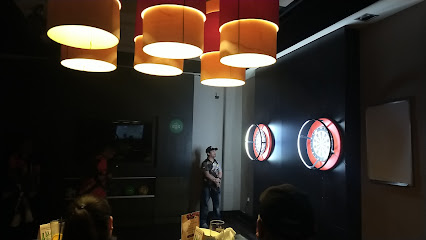
Havana Club Lounge
Discover the vibrant nightlife of Bahrain at Havana Club Lounge, a top destination for cocktails, dancing, and unforgettable moments.
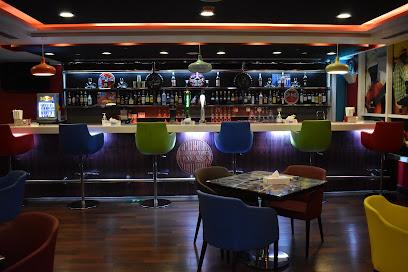
Sundeck Pool Bar
Experience the perfect blend of relaxation and socializing at Sundeck Pool Bar in Manama, where refreshing drinks meet a tranquil poolside atmosphere.
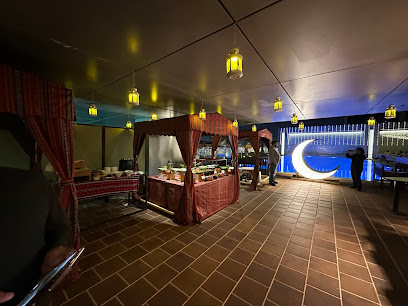
Dollywood Bar
Discover the vibrant nightlife at Dollywood Bar, a must-visit girl bar in Manama offering cocktails, entertainment, and a lively atmosphere.
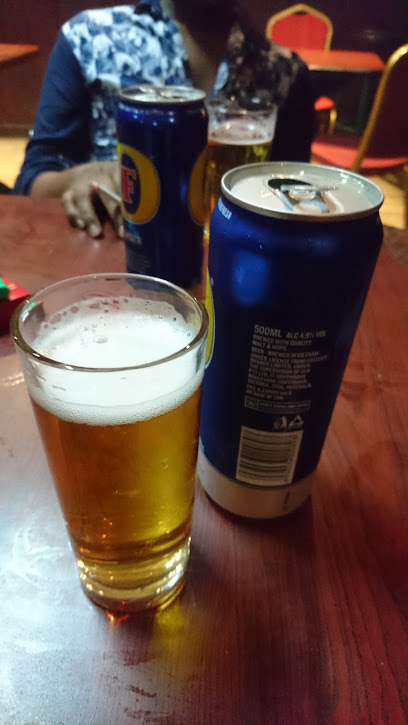
Sea Banks Pool Bar
Discover the vibrant atmosphere and refreshing cocktails at Sea Banks Pool Bar in Manama, your perfect retreat by the pool.
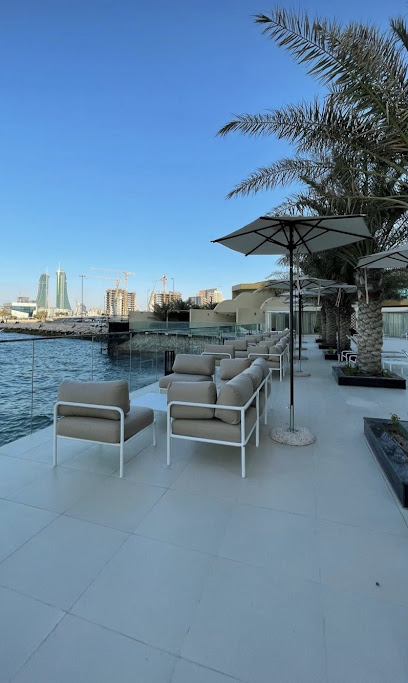
Elite Rooftop Lounge
Discover the breathtaking views and vibrant nightlife at Elite Rooftop Lounge, where luxury meets relaxation in Seef's skyline.
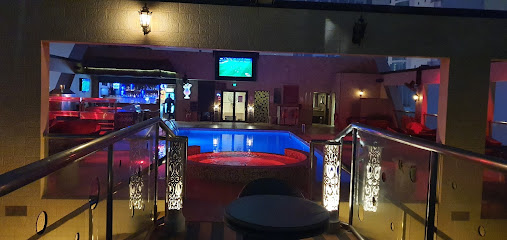
Local Phrases about Bahrain Fort
-
- Helloمرحبا
[Marhaba] - Goodbyeوداعا
[Wada'an] - Yesنعم
[Naam] - Noلا
[La] - Please/You're welcomeمن فضلك
[Min fadlak] - Thank youشكرا
[Shukran] - Excuse me/Sorryعذرا
[Aathir] - How are you?كيف حالك؟
[Kayf halak?] - Fine. And you?بخير. وأنت؟
[Bikhair. Wa ant?] - Do you speak English?هل تتحدث الإنجليزية؟
[Hal tatahadath al-inglizia?] - I don't understandأنا لا أفهم
[Ana la afham]
- Helloمرحبا
-
- I'd like to see the menu, pleaseأريد أن أرى القائمة، من فضلك
[Areed an ara alqaimah, min fadlak] - I don't eat meatأنا لا آكل اللحم
[Ana la aakol al lah'm] - Cheers!في صحتك!
[Fi sahtak!] - I would like to pay, pleaseأود أن أدفع، من فضلك
[Aawad an adfaa, min fadlak]
- I'd like to see the menu, pleaseأريد أن أرى القائمة، من فضلك
-
- Help!النجدة!
[Alnajdah!] - Go away!اذهب بعيدا!
[Ithhab baedan!] - Call the Police!اتصل بالشرطة!
[Itsal bialsurata!] - Call a doctor!اتصل بطبيب!
[Itsal bitalib!] - I'm lostلقد ضاعت طريقي
[Laqad daat tariqi] - I'm illأنا مريض
[Ana mareed]
- Help!النجدة!
-
- I'd like to buy...أريد أن أشتري...
[Areed an ashtari...] - I'm just lookingأنا فقط أتفرج
[Ana faqat atfarg] - How much is it?بكم هذا؟
[Bikam hatha?] - That's too expensiveهذا غالي جدا
[Hatha ghali jiddan] - Can you lower the price?هل يمكنك خفض السعر؟
[Hal yumkinuk kaffd alsiar?]
- I'd like to buy...أريد أن أشتري...
-
- What time is it?كم الساعة؟
[Kam alsaa'a?] - It's one o'clockالساعة الواحدة
[Alsa'ah alwahidah] - Half past (10)النصف بعد (10)
[Alnusf baed (10)] - Morningالصباح
[Alsubah] - Afternoonالعصر
[Al'asr] - Eveningالمساء
[Almasa'] - Yesterdayأمس
[Ams] - Todayاليوم
[Alyawm] - Tomorrowغدا
[Ghadan] - 1واحد
[Wahid] - 2اثنان
[Ithnan] - 3ثلاثة
[Thalatha] - 4أربعة
[Arba'a] - 5خمسة
[Khamsa] - 6ستة
[Sitta] - 7سبعة
[Sab'a] - 8ثمانية
[Thamania] - 9تسعة
[Tasia] - 10عشرة
[Ashara]
- What time is it?كم الساعة؟
-
- Where's a/the...?أين ...؟
[Ayna ...?] - What's the address?ما هو العنوان؟
[Ma huwa al'uanan?] - Can you show me (on the map)?هل يمكنك أن تريني (على الخريطة)؟
[Hal yumkinuk 'an tarini (ala alkharitah)?] - When's the next (bus)?متى الحافلة القادمة؟
[Mata alhafilat alqadimah?] - A ticket (to ....)تذكرة (إلى ...)
[Tazkirah (ila ...)]
- Where's a/the...?أين ...؟
History of Bahrain Fort
-
Bahrain Fort, also known as Qal'at al-Bahrain, is an archaeological site of immense historical significance. It dates back to around 2300 BC and was the capital of the Dilmun civilization. The fort's strategic location on the northern coast of Bahrain made it a vital trade hub connecting Mesopotamia and the Indus Valley.
-
The Dilmun civilization, one of the oldest trading civilizations, thrived in Bahrain Fort. The site was a significant center for commerce, with trade routes extending to Mesopotamia, the Indus Valley, and beyond. Archaeological finds such as seals, pottery, and inscriptions attest to the fort's role as a bustling trade hub.
-
In the 16th century, Bahrain Fort was occupied by the Portuguese who recognized its strategic importance. They reinforced the fortifications and used it as a base to control maritime trade routes in the Persian Gulf. The Portuguese influence is evident in some of the architectural features that can still be seen today.
-
After the Portuguese, the Persians took control of Bahrain Fort in the early 17th century. The fort continued to serve as a military and administrative center. Persian architectural influences were integrated into the existing structures, adding to the site's rich cultural tapestry.
-
In the late 18th century, the Al Khalifa family established control over Bahrain Fort. It became a significant seat of power and administration. The Al Khalifa dynasty's reign saw the fort being used for various administrative and residential purposes, marking a new chapter in its history.
-
In 2005, Bahrain Fort was designated as a UNESCO World Heritage Site. This recognition highlighted its global historical and cultural significance. Extensive archaeological excavations and conservation efforts have since been undertaken to preserve the site for future generations.
-
Ongoing excavations at Bahrain Fort have unearthed artifacts and structures that provide insights into the diverse civilizations that once inhabited the site. Discoveries include residential, public, commercial, and military buildings, as well as a wealth of artifacts like pottery, coins, and tools.
-
Bahrain Fort is not just an archaeological site; it is a symbol of Bahrain's rich cultural heritage. It reflects the island's historical role as a crossroads of trade and culture. The fort stands as a testament to the various civilizations that have left their mark on Bahrain, making it a must-visit destination for history enthusiasts.
Bahrain Fort Essentials
-
Bahrain Fort, also known as Qal'at al-Bahrain, is located on the northern coast of Bahrain, near the village of Karbabad. The nearest airport is Bahrain International Airport, which is approximately 15 kilometers away. From the airport, you can take a taxi or rent a car to reach the fort. The journey typically takes around 20-30 minutes by car. Public buses also operate from Manama, the capital city, to the vicinity of the fort, making it accessible via public transport.
-
Once you arrive in Bahrain, getting around is relatively easy. Taxis are widely available and can be hailed on the street or booked through ride-hailing apps. Car rentals are also available for those who prefer to drive themselves. Public buses run regularly and are an economical option for getting around, though they may not be as convenient as taxis for reaching Bahrain Fort directly. For a more immersive experience, consider hiring a local guide.
-
The official currency of Bahrain is the Bahraini Dinar (BHD). Credit and debit cards are widely accepted in hotels, restaurants, and larger shops. However, it's advisable to carry some cash for smaller vendors and markets. ATMs are readily available throughout Bahrain, including in the vicinity of Bahrain Fort. Currency exchange services are also available at the airport and in major shopping areas.
-
Bahrain is generally considered a safe destination for tourists, including the area around Bahrain Fort. However, it is always wise to take standard precautions. Avoid walking alone at night in isolated areas and keep an eye on your belongings in crowded places. There are no specific high-crime areas targeting tourists near Bahrain Fort, but staying vigilant is always a good practice.
-
In case of an emergency, dial 999 for immediate assistance. Bahrain has well-equipped medical facilities, and the nearest hospital to Bahrain Fort is Salmaniya Medical Complex, located in Manama. It is advisable to have travel insurance that covers medical emergencies. Pharmacies are also available in the area for minor health issues.
-
Fashion: Do dress modestly when visiting Bahrain Fort; light, breathable clothing that covers shoulders and knees is recommended. Avoid wearing revealing clothing. Religion: Do respect local customs and traditions. When visiting religious sites, it is advisable to cover your head. Public Transport: Do be polite and respectful. Avoid eating or drinking on public transport. Greetings: Do greet people with a handshake; it is customary in Bahrain. Eating & Drinking: Do try local foods and accept any hospitality offered. Don't refuse food or drink as it can be considered impolite.
-
To experience Bahrain Fort like a local, visit early in the morning or late in the afternoon to avoid the heat and crowds. Take your time exploring the fort and the surrounding archaeological site. Engage with the local guides who are often available on-site; they can provide valuable insights into the history and significance of the fort. Don't miss the small museum near the entrance, which displays artifacts found during excavations.
Trending Landmarks in Bahrain Fort
Nearby Cities to Bahrain Fort
-
Things To Do in Manama
-
Things To Do in Budaiya
-
Things To Do in Isa Town
-
Things To Do in Juffair
-
Things To Do in Muharraq
-
Things To Do in Riffa
-
Things To Do in Sitra
-
Things To Do in Hamad Town
-
Things To Do in Amwaj Islands
-
Things To Do in Al Khobar
-
Things To Do in Dammam
-
Things To Do in Al Shamal
-
Things To Do in Al Khor
-
Things To Do in Al Sheehaniya
-
Things To Do in Al Daayen








